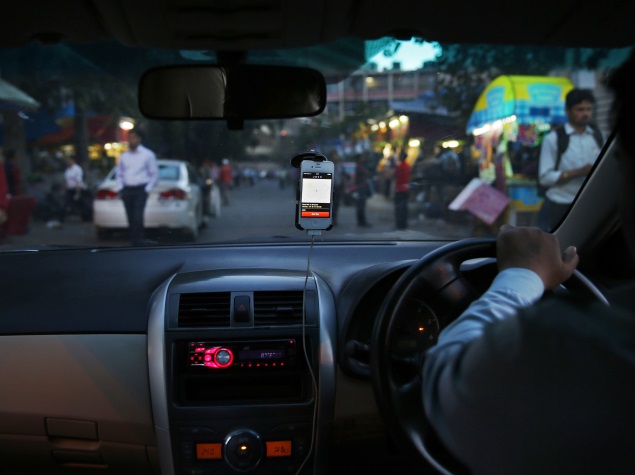- Home
- Others
- Others News
- New Device Prevents Car Drivers From Making or Receiving Calls
New Device Prevents Car Drivers From Making or Receiving Calls

The heart of the device - a printed electronic circuit - slightly bigger than a matchbox can also transmit details of the driver and the vehicle to the nearest police control room in case this is required.
To cost just about Rs. 450, it has been developed by Abdul Shabeer, dean of research at the AVS Engineering College, and Abdul Zubar of the Knowledge Institute of Technology, both located in Salem, Tamil Nadu. They have reported the details of the device and its performance in the June issue of the Journal of Scientific & Industrial Research.
Shabeer said accidents happen when driver's attention is distracted while using the cell phone when the vehicle is in motion.
"The distraction can come in different forms," Shabeer told IANS on phone. "The driver may take his eyes off the road and his hands off the wheel while reaching for the cellphone, or his mind off the road (cognitive distraction) while speaking on the phone."
The mobile detection device, according to the report, is based on "system mount technology." It basically exploits the fact that a cellphone emits a tiny amount of radiation when activated by an incoming or outgoing call. This radiation is picked up by an antenna coupled to the device and, if the strength of the radiation is above a certain "threshold" (75 millivolts), the device automatically turns on a "mobile jammer," an electronic signal that will prevent the user of the phone from making or receiving a call.
According to the report, the electronic circuit is so designed - and the "threshold level" is set in such a way - that it can detect whether the cellphone user is the driver of the vehicle or one of its passengers. It prevents only the driver from making or receiving calls but not the passengers, who will be able to use their phones.
This has been accomplished by placing the device right above the driver's seat with its antenna pointing towards the driver's head. Being close to the driver, the antenna will receive radiation above the "threshold level" and can disable the driver's phone. On the other hand, radiation received by the antenna from cellphones used by passengers elsewhere in the vehicle will be below the "threshold" and therefore unable to turn on the "mobile jammer".
According to the report, the driver can make or receive a call on cell phone only after stopping the vehicle. "When the driver's phone receives a call, a microcontroller in the device detects whether the vehicle is in motion or not," Shabeer said. "If it is in motion, the system notifies the driver via a 'voice chip' that a call is waiting. From then on, the driver has eight seconds to bring the vehicle to stop in a safe place and complete the call."
Shabeer said that in case of any violation the driver's face, captured by a micro-camera mounted in front of the driver, along with vehicle number plate information, will be transmitted to the nearest police control room (PCR).
According to Shabeer, the electronic device including the transmitter and low resolution camera would cost only Rs. 450. "If you go for a little high end camera, the system cost will go to a maximum of Rs. 700," he said.
"The implementation of this system in all vehicles will help in reduction of road accidents to a great extent," he said, adding that he has approached the Tamil Nadu government in this regard.
Shabeer said the system has been successfully tested in Maruti Omni vans in combination with different cellphones.
Is it possible for the driver to disable the device by pulling off its power cord or tampering with it in any other way?
"Not possible," Shabeer asserted.
"The device that we developed gets its power from the vehicle's ignition. So whenever the user starts the vehicle, it will communicate with the device. But if it fails to communicate for some reason, a message will be transmitted to the PCR along with vehicle number plate information. And in case the driver tries to remove or damage the device, it will send the message to the PCR," he said.
(K.S. Jayaraman can be contacted at killugudi@hotmail.com)
Catch the latest from the Consumer Electronics Show on Gadgets 360, at our CES 2026 hub.
Related Stories
- Samsung Galaxy Unpacked 2025
- ChatGPT
- Redmi Note 14 Pro+
- iPhone 16
- Apple Vision Pro
- Oneplus 12
- OnePlus Nord CE 3 Lite 5G
- iPhone 13
- Xiaomi 14 Pro
- Oppo Find N3
- Tecno Spark Go (2023)
- Realme V30
- Best Phones Under 25000
- Samsung Galaxy S24 Series
- Cryptocurrency
- iQoo 12
- Samsung Galaxy S24 Ultra
- Giottus
- Samsung Galaxy Z Flip 5
- Apple 'Scary Fast'
- Housefull 5
- GoPro Hero 12 Black Review
- Invincible Season 2
- JioGlass
- HD Ready TV
- Laptop Under 50000
- Smartwatch Under 10000
- Latest Mobile Phones
- Compare Phones
- OPPO Reno 15 Pro Max
- Honor Win RT
- Honor Win
- Xiaomi 17 Ultra Leica Edition
- Xiaomi 17 Ultra
- Huawei Nova 15
- Huawei Nova 15 Pro
- Huawei Nova 15 Ultra
- Asus ProArt P16
- MacBook Pro 14-inch (M5, 2025)
- OPPO Pad Air 5
- Huawei MatePad 11.5 (2026)
- Xiaomi Watch 5
- Huawei Watch 10th Anniversary Edition
- Acerpure Nitro Z Series 100-inch QLED TV
- Samsung 43 Inch LED Ultra HD (4K) Smart TV (UA43UE81AFULXL)
- Asus ROG Ally
- Nintendo Switch Lite
- Haier 1.6 Ton 5 Star Inverter Split AC (HSU19G-MZAID5BN-INV)
- Haier 1.6 Ton 5 Star Inverter Split AC (HSU19G-MZAIM5BN-INV)

















